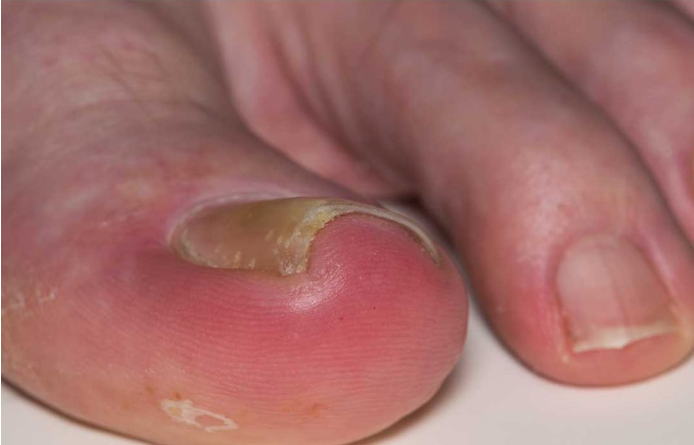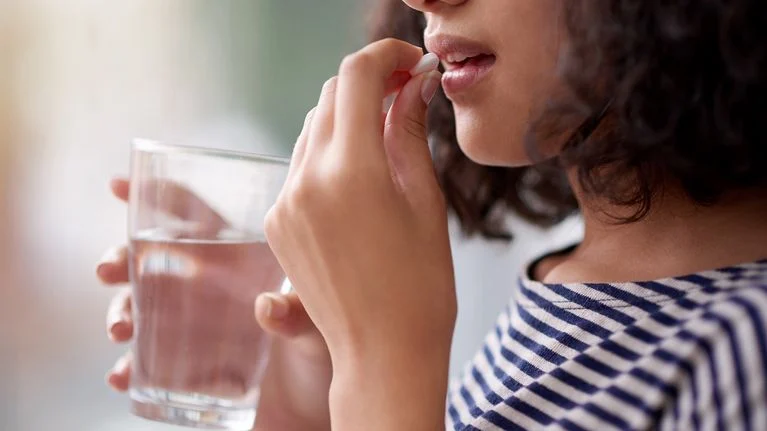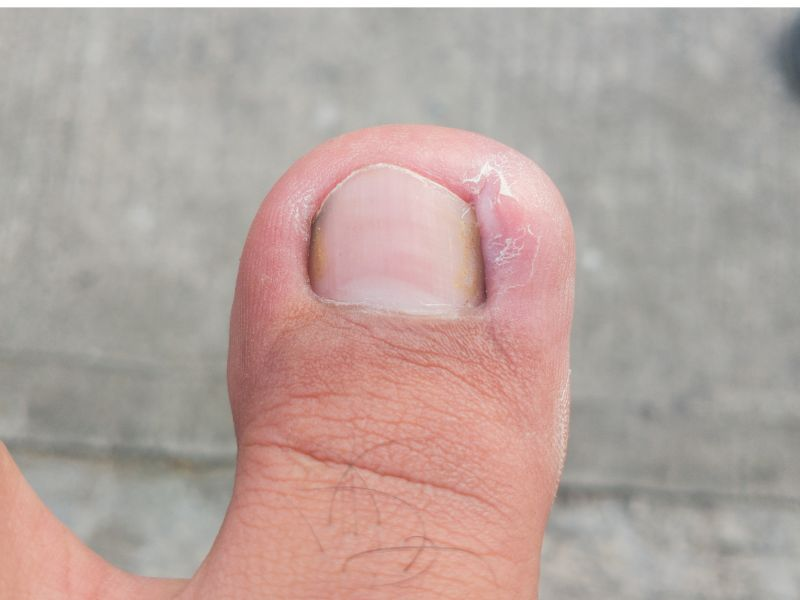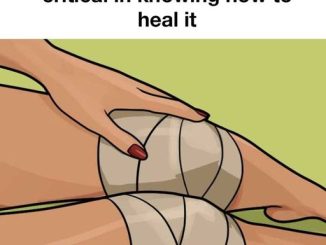Dealing with redness and pain around your toenails can be frustrating, especially if your doctor’s appointment is far off. The discomfort often stems from ingrown toenails, a common condition where the nail grows into the surrounding skin. If left untreated, it can lead to infection and increased pain. Luckily, there are effective home remedies and preventive steps you can take to manage the situation until you can see a doctor.
What Causes Ingrown Toenails?

Ingrown toenails develop when the edges of your nails dig into the soft skin surrounding them. This can happen due to:
- Improper nail trimming – Cutting your nails too short or rounding the edges can encourage the nail to grow into the skin.
- Tight shoes or socks – Footwear that squeezes your toes together puts pressure on the nail, forcing it into the skin.
- Genetic predisposition – Some people naturally have curved nails, making them more prone to ingrown toenails.
- Injury or trauma – Stubbing your toe, repetitive pressure from running, or dropping something on your foot can lead to nail problems.
Recognizing the Symptoms of an Ingrown Toenail
Early detection is crucial to avoid complications. Watch for these signs:
- Redness and swelling around the edges of the toenail
- Pain and tenderness when pressing on the affected area
- Pus or drainage, which can indicate infection
- Overgrown skin around the nail, sometimes appearing inflamed
If caught early, you can treat an ingrown toenail at home and prevent it from worsening.
Immediate Home Remedies to Relieve Pain and Inflammation
If your ingrown toenail is causing discomfort, here’s what you can do right now:
1. Soak Your Foot in Warm Water with Epsom Salt
A 15-20 minute foot soak, 2-3 times a day, can help reduce swelling and soften the nail and skin. Add Epsom salt or mild soap to the water to ease inflammation and cleanse the area.
2. Gently Lift the Nail
After soaking, carefully lift the ingrown edge of the nail using a clean tweezer or cotton swab. Place a small piece of cotton or dental floss under the nail to encourage it to grow outward instead of into the skin. Replace this daily after each soak.
3. Apply an Antiseptic Ointment
Using an over-the-counter antibacterial cream like Neosporin can help prevent infection. Cover the toe with a breathable bandage to keep it clean and protected.
4. Wear Open-Toed or Loose-Fitting Shoes
Avoid tight shoes that put pressure on the toenail. Instead, opt for sandals or wide-toed shoes to give your foot some breathing room.
5. Take Over-the-Counter Pain Relievers

If the pain is intense, ibuprofen or acetaminophen can help reduce discomfort and swelling.
Proper Foot Hygiene to Prevent Worsening
Maintaining good foot hygiene is essential to managing and preventing ingrown toenails. Follow these simple habits:
- Wash your feet daily with warm water and mild soap.
- Dry your feet thoroughly after washing, especially between the toes.
- Trim nails straight across and avoid cutting them too short.
- Disinfect nail clippers before use to prevent bacterial infections.
When to Seek Medical Attention
While home remedies can be effective, there are situations where you should see a doctor immediately:
- Severe pain and swelling that worsens despite treatment
- Signs of infection, such as pus, warmth, or red streaks spreading from the toe
- Diabetes or circulation issues, which can increase the risk of complications
- Recurring ingrown toenails, indicating a need for medical intervention
Your doctor might perform a minor procedure to lift, partially remove, or permanently correct the nail to prevent future problems.
Preventing Ingrown Toenails from Coming Back

Once you’ve managed the pain, focus on preventing future ingrown toenails by making these simple lifestyle changes:
- Trim nails correctly – Always cut them straight across, without rounding the edges.
- Choose the right footwear – Avoid shoes that squeeze your toes. Look for comfortable, wide-toed options.
- Protect your feet – If you’re active in sports or frequently bump your toes, wear well-fitting, protective shoes.
- Keep an eye on your nails – Regularly check your feet for any signs of ingrown nails and address them early.
Common Mistakes to Avoid
Many people unknowingly make their ingrown toenails worse by:
❌ Cutting the nail too short – This increases the chance of it growing into the skin.
❌ Digging into the corners with clippers – It might provide temporary relief but worsens the problem long-term.
❌ Ignoring early symptoms – Mild redness or discomfort can quickly turn into an infection.
❌ Wearing tight shoes and socks – Constant pressure only makes matters worse.
Alternative Natural Remedies You Can Try

If you prefer natural solutions, some home remedies might help soothe the pain:
- Tea tree oil – Known for its antiseptic properties, tea tree oil can help reduce inflammation and prevent infection. Apply a diluted solution to the affected area.
- Apple cider vinegar soak – Soaking your foot in a mixture of warm water and apple cider vinegar may help with swelling and bacterial buildup.
- Aloe vera gel – Applying fresh aloe vera can provide relief by soothing irritation and speeding up healing.
While these remedies may provide some relief, they should be used alongside proper foot care and not as a replacement for medical treatment if symptoms persist.
Conclusion: Managing Ingrown Toenails Until Your Doctor’s Visit
Dealing with an ingrown toenail can be painful, but there are plenty of effective home remedies to manage the discomfort while waiting for your doctor’s appointment. Soaking your foot, keeping the area clean, lifting the nail, and avoiding tight shoes can help reduce pain and prevent infection.
If symptoms get worse, don’t hesitate to seek professional treatment. Taking the right preventive measures can keep ingrown toenails from becoming a recurring issue. By caring for your feet properly, you can avoid unnecessary pain and keep your nails healthy in the long run.


